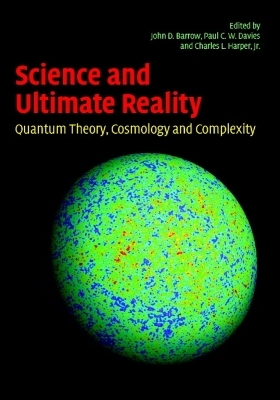
Science and Ultimate Reality
Cambridge University Press (Verlag)
978-0-521-83113-0 (ISBN)
This volume provides a fascinating snapshot of the future of physics, covering fundamental physics, at the frontiers of research. It comprises a wide variety of contributions from leading thinkers in the field, inspired by the pioneering work of John A. Wheeler. Quantum theory represents a unifying theme within the book, along with topics such as the nature of physical reality, the arrow of time, models of the universe, superstrings, gravitational radiation, quantum gravity and cosmic inflation. Attempts to formulate a final unification of physics are discussed, along with the existence of hidden dimensions of space, space-time singularities, hidden cosmic matter, and the strange world of quantum technology.
Foreword John A. Wheeler; Editor's preface John D. Barrow, Paul Davies and Charles Harper, Jr.; Preface Freeman J. Dyson; Part I. An Overview of the Contributions of John Archibald Wheeler: 1. John Archibald Wheeler and the clash of ideas Paul C. W. Davies; Part II. An Historian's Tribute to John Archibald Wheeler and Scientific Speculation Through the Ages: 2. The heritage of Heraclitus: John Archibald Wheeler and the itch to speculate Jaroslav Pelikan; Part III. Quantum Reality - Theory: 3. Why is nature described by quantum theory? Lucien Hardy; 4. Thought experiments in honor of John Wheeler Freeman J. Dyson; 5. It from qubit David Deutsch; 6. The wave function: it or bit? H. Dieter Zeh; 7. Quantum Darwinism and envariance Wojciech H. Zurek; 8. Using qubits to learn about it Juan Pablo Paz; 9. Quantum gravity as an ordinary gauge theory Juan M. Maldacena; 10. The Everett interpretation of quantum mechanics Bryce S. DeWitt; Part IV. Quantum Reality - Experiment: 11. Why the quantum? It from bit? A participatory universe? Three far-reaching, visionary questions from John Archibald Wheeler and how they inspired a quantum experimentalist Anton Zeilinger; 12. Speakable and unspeakable, past and future Aephraim M. Steinberg; 13. Conceptual tensions between quantum mechanics and general relativity: are there experimental consequences? Raymond Y. Chiao; 14. Breeding non-local Schrödinger cats: a thought experiment to explore the quantum classical boundary Serge Haroche; 15. Quantum erasing the nature of reality - or, perhaps, the reality of nature? Paul G. Kwiat and Berthold-Georg Englert; 16. Quantum feedback and the quantum-classical transition Hideo Mabuchi; 17. What quantum computers may tell us about quantum mechanics Christopher R. Monroe; Part V. Big Questions in Cosmology: 18. Cosmic inflation and the arrow of time Andreas Albrecht; 19. Cosmology and immutability John D. Barrow; 20. Quantum cosmology, inflation, and the anthropic principle Andrei Linde; 21. Parallel universes Max Tegmark; 22. Quantum theories of gravity: results and prospects Lee Smolin; 23. A genuinely evolving universe Joao Magueijo; 24. Planck-scale models of the universe Fotini G. Markopoulou; 25. Implications of additional spatial dimensions to questions in cosmology Lisa Randall; Part VI. Emergence, Life, and Related Topics: 26. Emergence: us from it Philip D. Clayton; 27. True complexity and its associated ontology George F. R. Ellis; 28. The three origins: cosmos, life and mind Marcelo Gleiser; 29. Autonomous agents Stuart A. Kauffman; 30. To see a world in a grain of sand Shou-Cheng Zhang; Appendix A. Science and ultimate reality program committees; Appendix B. Young researchers competition in honor of John Archibald Wheeler for physics graduate students, post-doctoral fellows, and young faculty.
| Erscheint lt. Verlag | 22.4.2004 |
|---|---|
| Zusatzinfo | 8 Halftones, unspecified; 53 Line drawings, unspecified |
| Verlagsort | Cambridge |
| Sprache | englisch |
| Maße | 182 x 254 mm |
| Gewicht | 1641 g |
| Themenwelt | Naturwissenschaften ► Physik / Astronomie ► Theoretische Physik |
| ISBN-10 | 0-521-83113-X / 052183113X |
| ISBN-13 | 978-0-521-83113-0 / 9780521831130 |
| Zustand | Neuware |
| Haben Sie eine Frage zum Produkt? |
aus dem Bereich


